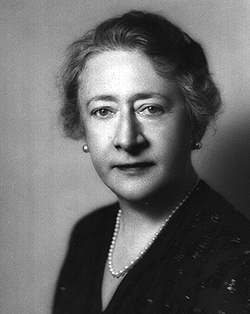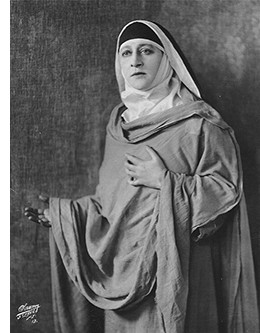Our Stories
1927 : The Mary (Regan) Rehan Story
Tweet1927-1937
 In a tribute to her dear friend and colleague, Mary Rehan(1) repeated the age-old allegory of life as a fabric woven from a single thread. It seems fitting then to apply that allegory to Mary Rehan, who was, amongst many other things, an accomplished lawyer for our predecessor firm Barnes, Chilvers & Halsted from 1927 to 1937.
In a tribute to her dear friend and colleague, Mary Rehan(1) repeated the age-old allegory of life as a fabric woven from a single thread. It seems fitting then to apply that allegory to Mary Rehan, who was, amongst many other things, an accomplished lawyer for our predecessor firm Barnes, Chilvers & Halsted from 1927 to 1937.
The thread of Mary Rehan’s life yielded an impressive fabric. Born to Margaret and Charles Regan(2) in Chippewa Falls, Wisconsin, Mary and her six siblings were proud second generation Irish-Americans. Mary’s paternal grandmother emigrated from Ireland sometime before 1856. Her maternal grandparents, Mary Rose and Michael Hanrahan, met in Clonmel, Ireland, and later emigrated to New York where they had a farm before moving to Wisconsin. Mary Rose is said to have been quite strong and determined as she ran the family farm all by herself. Mary’s grandfather, Michael, was a scholar who had attended the Royal Academy in Dublin and had a deep affinity for theatre and drama. Mary and her grandfather would recite verses from Alice in Wonderland and Shakespeare’s sonnets and plays together.
 By the late 1910’s Mary was a professional actor with the Ben Greet Players in New York City. Mary gained notoriety for her 1920 Broadway appearance in “The Prince and the Pauper” with William Faversham, and her performance as Jo in “Little Women” and as Night in Maeterlinck’s “Blue Bird.”
By the late 1910’s Mary was a professional actor with the Ben Greet Players in New York City. Mary gained notoriety for her 1920 Broadway appearance in “The Prince and the Pauper” with William Faversham, and her performance as Jo in “Little Women” and as Night in Maeterlinck’s “Blue Bird.”
After leaving Barnes, Mary founded her own law practice in Washington, D.C., where she was a political activist and dedicated Republican. While still in New York, Mary founded the Museum of Costume Art, and was also the director of the Costume Institute of the Metropolitan Museum of Art, where she served with gusto and was eventually awarded an honorary life fellow of the museum.
Perhaps these last two roles explain Mary’s inclination for the thread/fabric allegory. In any event, Mary wove a sensational fabric with her thread, and it is apparent that there is little Mary did without vigor. The firm is proud to have counted such an individual amongst its historical ranks.
1 Rehan, Mary. “A Tribute to Irene Lewisohn.” The Metropolitan Museum of Art Bulletin, vol. 3, no. 10, 1945, pp. 233–234. JSTOR, www.jstor.org/stable/3257183.
2 Mary’s last name was originally Regan, like her parents. However, Mary’s name was once misspelled on a billboard as ”Mary Rehan,” and she eventually formalized the error and officially changed her last name.
